Choosing the Right Pallet Inverter for Spain's Demands in CE-certified machines for food-grade operations
Are you running a food or pharmaceutical business in Spain? You know the daily pressure to move goods efficiently. You also know the strict rules. You need to swap pallets, maybe from wood to plastic for hygiene, but doing it manually is slow and risky. The wrong equipment choice can lead to bigger problems. A machine that isn't CE-certified could be stopped at the border or shut down by inspectors. Worse, a non-hygienic machine could cause a contamination crisis, ruin your products, and damage your brand's reputation. It feels like a choice between efficiency and compliance, and getting it wrong is expensive. The solution is to find a machine that meets both needs perfectly. You need a pallet inverter that is specifically designed for food-grade operations and is fully CE-certified for the Spanish and EU markets. This guide will walk you through making that critical choice.
Choosing the right pallet inverter for the Spanish market requires a focus on three key areas. First, the machine must be CE-certified, which is a legal mandate in the EU ensuring it meets health and safety standards. Second, it must be constructed for food-grade operations, typically using stainless steel and hygienic design to prevent contamination. Finally, the specific type of inverter must match your product's needs, whether you are handling robust sacks or fragile boxes, to ensure both efficiency and product integrity.
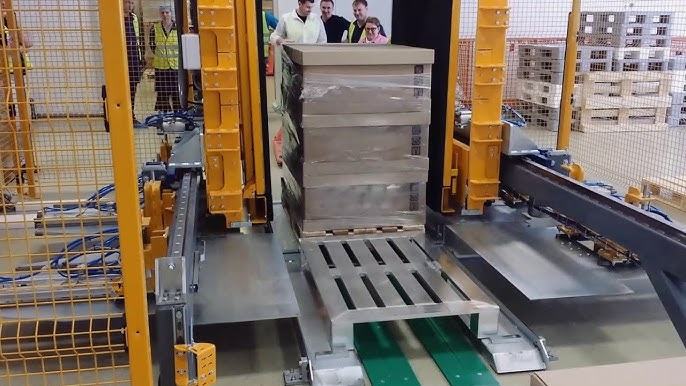
I've spent my entire career in the industrial packaging world, from being an engineer on the factory floor to building my own company. I’ve seen firsthand how the right machine can transform a business, and how the wrong one can become a constant headache. The principles are the same whether you're wrapping giant steel coils or handling delicate food products. It’s all about reliability, compliance, and return on investment. The details in your decision process are what make the difference. Let's break down exactly what you need to look for when selecting a pallet inverter for your operations in Spain. We will go step by step, so you can make a choice with confidence.
Why is CE Certification Non-Negotiable for Pallet Inverters in Spain?
You see a pallet inverter from a supplier outside the EU. The price is tempting, much lower than the European competitors. You might think about taking the risk to save on the initial investment. But what happens next? The machine arrives at a Spanish port and is held by customs because it lacks a CE mark. Now you face delays, fines, and the cost of shipping it back. Or, it gets through, but during a safety audit, an inspector flags it as non-compliant. Your production line is halted until you can prove its safety, which is nearly impossible without the proper documentation. The initial savings have evaporated, replaced by much larger costs and stress. Protecting your investment and your operation means understanding that CE certification is not just a sticker; it's a fundamental requirement for doing business.
CE certification is non-negotiable for pallet inverters in Spain because it is a legal requirement under EU law. This mark signifies that the manufacturer has verified the machine against all relevant health, safety, and environmental protection standards. Without it, the machine cannot be legally sold or operated in Spain, exposing your business to significant legal and financial risks, including fines, operational shutdowns, and invalidated insurance claims.
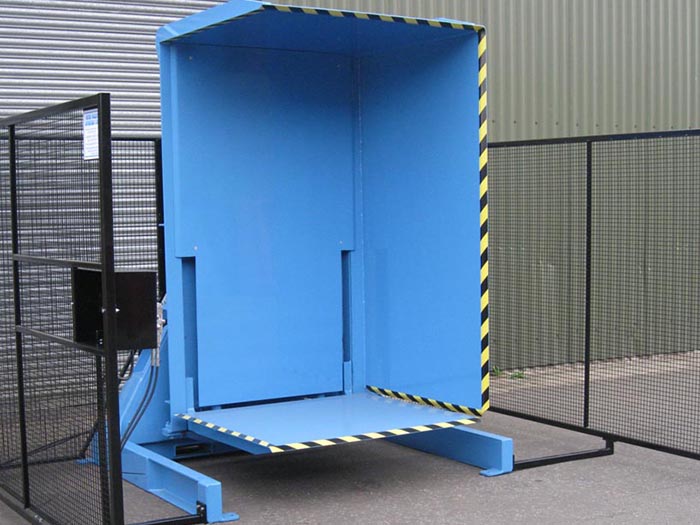
Dive Deeper: The Real-World Impact of CE Certification
For a business leader like yourself, every decision must be weighed against its potential return and its potential risk. The CE mark directly impacts both. It’s not just a bureaucratic hurdle; it’s a framework for risk management.
What Does the "CE" Mark Actually Guarantee?
The "Conformité Européenne" mark is your first line of defense. It is the manufacturer's declaration that the product complies with the EU's New Approach Directives. For a pallet inverter, this typically involves several key areas:
- Machinery Directive (2006/42/EC): This is the core directive. It ensures the machine has proper guards for moving parts, emergency stop functions that are easily accessible, and safe electrical and hydraulic systems. It protects your operators from injury, which is your number one priority.
- Low Voltage Directive (2014/35/EU): This covers the safety of electrical components, protecting against electric shock and fire hazards.
- Electromagnetic Compatibility (EMC) Directive (2014/30/EU): This ensures the machine won't interfere with other electronic equipment in your plant, and that it isn't susceptible to interference itself. This is crucial in a modern, automated facility.
How to Verify a Genuine CE Certificate
Simply seeing a "CE" logo on a machine is not enough. You must perform due diligence. Ask the supplier for two key documents:
- Declaration of Conformity (DoC): This is a formal, signed document from the manufacturer stating which directives the machine complies with.
- Technical File: The manufacturer must be able to produce a technical file upon request. This file contains the design drawings, risk assessments, and test results that prove compliance. A hesitant or unwilling supplier is a major red flag.
I remember a client in the early days of my business who bought a machine from a non-reputable source. It looked fine, but it lacked a real DoC. An accident occurred, and their insurance company refused to cover the damages because the equipment was not legally compliant. It was a harsh lesson that I share with all my clients. The short-term saving is never worth the long-term risk.
| Feature | With CE Mark | Without CE Mark |
|---|---|---|
| Legal Status | Legal to operate and sell in Spain/EU. | Illegal. Subject to seizure and fines. |
| Operator Safety | Verified safety features (guards, E-stops). | Unknown. High risk of accidents. |
| Insurance | Insurance policies are valid. | Claims can be denied. |
| Market Access | Can be resold within the EU market. | Cannot be legally resold. No resale value. |
| Audits | Passes safety and regulatory audits. | Fails audits, leading to production stops. |
What Makes a Pallet Inverter Truly 'Food-Grade'?
You need to transfer your food products from wooden pallets to hygienic plastic ones to enter your cleanroom facility. You have a CE-certified pallet inverter in your sights. But is it ready for a food environment? A standard industrial machine, even if it's safe, can be a source of contamination. Imagine painted surfaces chipping and falling into a batch of ingredients. Or picture cleaning crews struggling to sanitize a machine full of tight corners and crevices, where bacteria can thrive undetected. A single contamination event can lead to a product recall, costing millions and destroying consumer trust. The solution isn't just a clean machine; it's a machine designed for cleanliness from its very core.
A pallet inverter becomes truly "food-grade" when its design and construction prioritize hygiene. This means it is built primarily from materials like 304 or 316 stainless steel to resist corrosion and prevent bacterial growth. Its design must feature smooth, continuous welds, rounded corners, and no hidden crevices where food particles or moisture can get trapped. The goal is a machine that is not only clean but also incredibly easy to keep clean, meeting standards like HACCP.
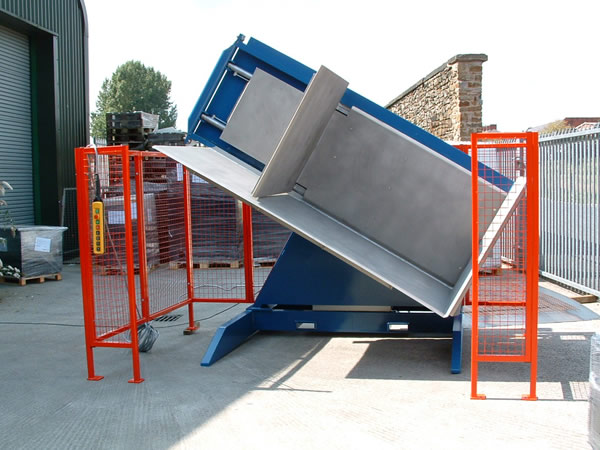
Dive Deeper: The Anatomy of a Hygienic Machine
When we design equipment for sensitive industries, we have to think like a microbiologist. Every surface, joint, and component must be considered from a hygiene perspective. This goes far beyond a simple surface wipe-down.
Material Matters: Stainless Steel is the Standard
The choice of material is the foundation of hygienic design.
- Stainless Steel (SS 304): This is the workhorse for most food-grade applications. It offers excellent corrosion resistance and is easy to clean.
- Stainless Steel (SS 316): This grade is used for more demanding environments, especially those with high salt or acid content, like facilities handling brines, sauces, or certain cleaning agents. It offers superior corrosion resistance.
- Painted Mild Steel: This is unacceptable in a food-grade zone. Paint can chip, flake, or crack, creating physical contamination hazards and leaving the underlying steel exposed to rust.
Hygienic Design Principles in Action
It's not enough to use the right material; the machine must be built correctly. Here's what we focus on:
- No Hollow Sections: Hollow tubes or frames can trap moisture and harbor bacteria. If they must be used, they should be hermetically sealed.
- Continuous Welds: All welds should be continuous and polished smooth. Stitch welding, which leaves gaps, is a major contamination risk and should be avoided.
- Rounded Corners: Sharp internal corners are difficult to clean. A machine designed for food-grade use will have generous radii on all corners, allowing for effective cleaning and preventing biofilm buildup.
- Exposed Components: We try to avoid enclosed cabinets where possible. Open-frame designs make inspection and cleaning far easier. Hydraulic hoses and electrical cables should be routed to avoid debris collection points.
| Feature | Standard Industrial Inverter | True Food-Grade Inverter |
|---|---|---|
| Primary Material | Painted mild steel | Stainless Steel (SS304 or SS316) |
| Welds | Often stitch-welded or left rough. | Continuous, ground smooth, and polished. |
| Design | Contains sharp corners, crevices, hollow parts. | Rounded corners, sloped surfaces, no hollows. |
| Surfaces | Paint can chip; surfaces can be porous. | Polished or bead-blasted finish, non-porous. |
| Cleaning | Difficult and time-consuming. | Fast, easy, and effective cleaning (CIP-friendly). |
This level of detail is what separates a compliant machine from a truly effective one. It’s an investment that pays for itself by reducing cleaning time, minimizing contamination risks, and ensuring you pass every food safety audit with flying colors.
How Do You Select the Right Type of Pallet Inverter for Your Specific Food Product?
You’ve committed to a CE-certified, food-grade pallet inverter. Now you face the final big question: which type is right for you? You see models that flip the entire load 180 degrees and others that gently clamp it from the side. You might think they all do the same job. But applying a 180-degree rotation to a pallet of bottled liquids or stacked baked goods could result in a shifted, damaged, or completely ruined load. Choosing a mechanism that is too aggressive for your product leads to waste, while choosing one that is too slow for your throughput creates bottlenecks. The key to maximizing your ROI is to perfectly match the machine’s function to your product's specific characteristics and your operational demands.
To select the right type of pallet inverter, you must first analyze your product and load. For durable, stable goods like sacks of flour or frozen blocks, a 180-degree inverter is fast and effective. For fragile, unstable, or liquid products like glass jars, vials, or yogurt cups, a pallet exchanger that clamps the load from the sides and slides the pallet out is a much safer choice, as it avoids full inversion and potential damage.
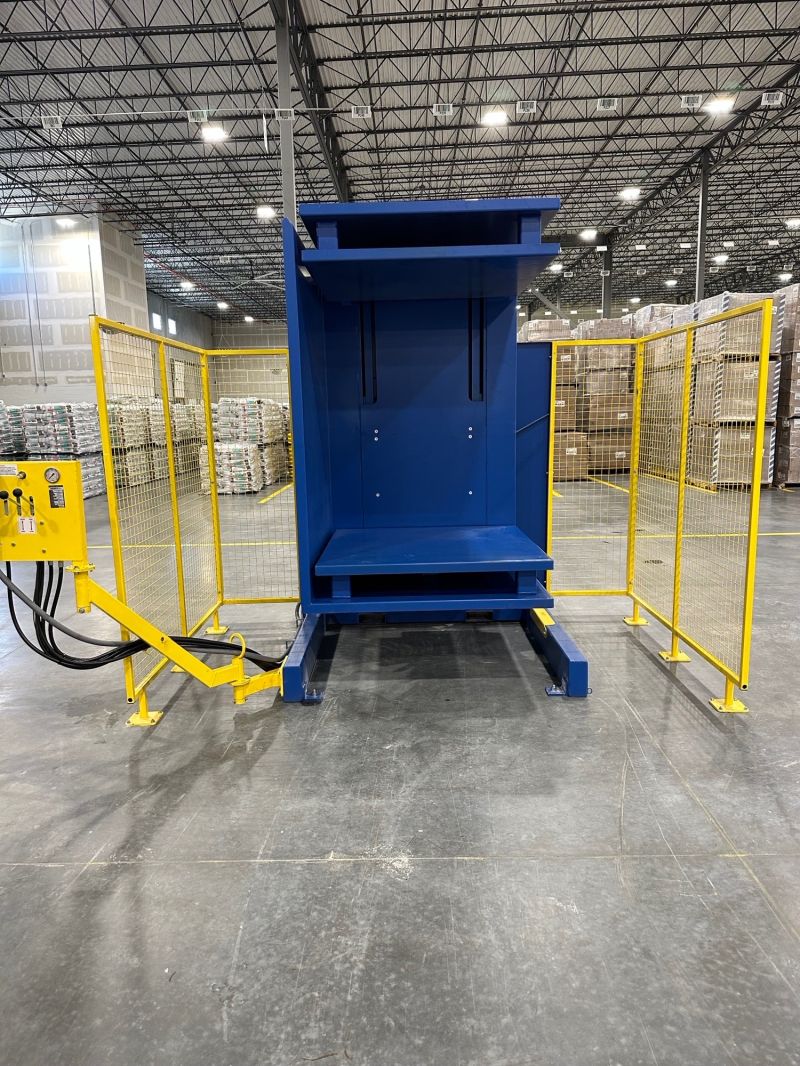
Dive Deeper: Matching Mechanism to Mission
Your product dictates the machine. Let's look at the main options and where they excel. Thinking through this process is crucial, just like when I help a client choose between different types of coil wrappers based on the steel's width, weight, and wrapping material.
The Workhorse: 180-Degree Inverter
This is the classic design. The machine clamps the palletized load at the top and bottom, lifts it, and rotates it a full 180 degrees. The original pallet is now on top and can be removed.
- Best For: Robust, stable, and non-liquid products. Think sacks of grain, boxes of frozen meat, or canned goods.
- Advantages: Typically faster cycle times, simpler mechanism, and often a lower initial cost.
- Considerations: Not suitable for products that can shift, mix, or break under inversion. The pressure from the top clamp must also be considered for crushable items.
The Gentle Giant: Pallet Exchanger (Side Clamping)
This machine offers a more delicate touch. It clamps the load on its sides, then either lifts the load to allow pallet removal or pushes the load onto a new pallet. There is no full inversion.
- Best For: Fragile or unstable products. Think glass bottles, pharmaceutical vials, tiered cakes, or open-top trays.
- Advantages: Maximum product safety. It preserves the original stacking pattern perfectly.
- Considerations: Cycle times can be slightly longer, and the machines are often more complex and have a higher initial cost.
Decision Matrix: Key Factors to Analyze
Before you speak to a supplier, have the answers to these questions ready. A good partner will ask you for this information.
| Inverter Type | Product Suitability | Speed | Footprint | Automation Level |
|---|---|---|---|---|
| 180-Degree Inverter | Robust, stable, non-liquid (sacks, frozen blocks, cans). | High | Medium | Can be standalone or fully integrated. |
| Pallet Exchanger | Fragile, unstable, liquid (bottles, vials, baked goods). | Medium | Medium to Large | Often integrated into conveyor lines. |
| Floor-Level Inverter | Good for operations without forklifts (loads via pallet truck). | Low to Medium | Small | Typically standalone manual operation. |
For example, if you are a high-volume producer of bagged sugar in Spain, a stainless steel 180-degree inverter is likely your most efficient and cost-effective choice. However, if you are a pharmaceutical company handling vials of medicine, the product's value and fragility make a side-clamping pallet exchanger the only logical option, where the higher investment is easily justified by preventing the loss of a single pallet.
Beyond the Machine: What Should You Expect from Your Pallet Inverter Supplier?
You have done your research. You have a detailed specification for a CE-certified, food-grade pallet inverter, perfectly suited to your product. You send out requests for quotes and get several replies. The natural tendency is to compare the prices and choose the lowest one that meets the spec sheet. But I urge you to pause. I learned a powerful lesson when I was building my own factory. The purchase price of a machine is only one part of its total cost. A machine with poor support, unavailable spare parts, or a supplier who disappears after the sale will cost you far more in downtime and frustration than you ever saved on the initial purchase. You are not just buying a piece of steel; you are entering a long-term relationship.
Beyond the hardware, you should expect your pallet inverter supplier to be a strategic partner invested in your success. This partnership includes expert pre-sale consultation to ensure the right fit, professional installation and training for your team, reliable and responsive after-sales service with readily available parts, and proactive advice on maintaining and upgrading your equipment to meet future challenges.
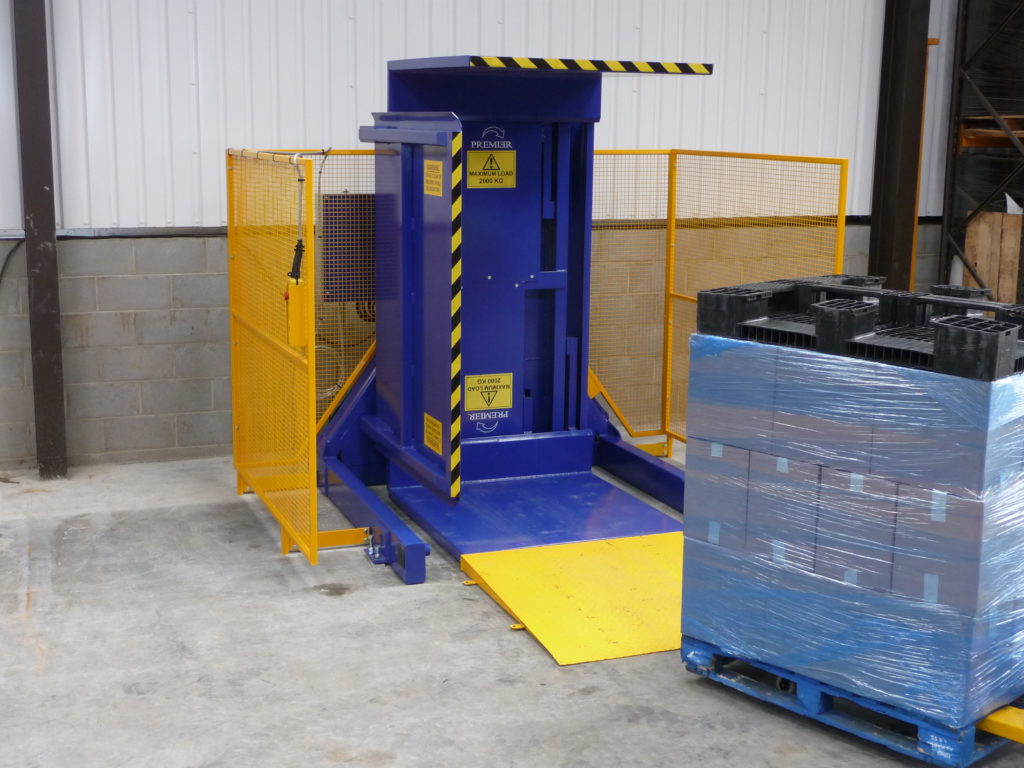
Dive Deeper: The Hallmarks of a True Partner
In my journey from engineer to factory owner, I’ve been on both sides of the table. I know what separates a simple vendor from a partner who helps you grow. This is the philosophy I built SHJLPACK on. When you evaluate a supplier for your Spanish operations, look for these signs.
The Consultation Phase: Are They Listening or Selling?
A true partner begins by asking questions, not by pushing a specific model. They should want to understand your entire process.
- What is your current throughput? What are your growth goals for the next five years?
- What is your facility layout? Are there space or height constraints?
- How do you clean your equipment? What chemicals do you use?
- How skilled is your maintenance team?
This deep inquiry shows they are focused on providing a total solution, not just selling a box.
After-Sales Support: The Real Test of a Supplier
This is where the true value of a partner emerges. Before you sign anything, ask them directly:
- What is your standard warranty, and what does it cover?
- Where are your spare parts warehoused? What is the lead time for critical parts to Spain?
- Do you offer remote diagnostic support to troubleshoot issues quickly?
- What is the availability of your service technicians?
A supplier with a strong, established service network is an asset. A supplier with no clear answers is a risk.
A Lesson From My Journey in Steel Packaging
Early in my career, I needed a critical wrapping machine for a new production line. I chose a supplier who was 15% cheaper than the established leader. The machine worked, but when a unique part failed six months later, the supplier had a 12-week lead time. That machine sat idle for three months, and the cost of that downtime was ten times what I had "saved" on the purchase. That experience taught me that the machine's reliability is tied directly to the supplier's reliability. This principle is universal. Whether it's a 50-ton steel coil or a pallet of food, downtime is the enemy. Your supplier is your primary defense against it.
Future-Proofing: A Partner Thinks Ahead
A good partner helps you prepare for the future. Do they talk about opportunities for automation and integration with your MES (Manufacturing Execution System)? Do they discuss IoT sensors for predictive maintenance, a goal for any forward-thinking leader? Can they advise on potential changes in EU regulations? A supplier focused on a long-term relationship will help you build a more efficient, resilient, and profitable operation for years to come.
Conclusion
Choosing the right CE-certified, food-grade pallet inverter for Spain is a strategic decision. Focus on compliance, suitability, and a strong supplier partnership to ensure long-term success and ROI.





